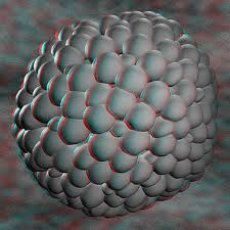Medical expert of the article
New publications
Scientists were able to grow an egg cell from stem cells
Last reviewed: 01.07.2025

All iLive content is medically reviewed or fact checked to ensure as much factual accuracy as possible.
We have strict sourcing guidelines and only link to reputable media sites, academic research institutions and, whenever possible, medically peer reviewed studies. Note that the numbers in parentheses ([1], [2], etc.) are clickable links to these studies.
If you feel that any of our content is inaccurate, out-of-date, or otherwise questionable, please select it and press Ctrl + Enter.

A group of scientists from Harvard University have successfully conducted an experiment in growing eggs in the laboratory from stem cells taken from the ovary of a young woman. The results of the work were published on February 26 in the journal Nature Medicine.
The authors of the study believe that this disproves the dogma that the ovaries initially contain a limited and non-renewable supply of eggs, which are depleted during a woman's reproductive years. As Professor Jonathan Tilly, director of the Center for Reproductive Biology at Massachusetts General Hospital, who led the team, told BBC News, the results could lead to a revolutionary breakthrough in human reproduction in the near future.
Tilly put forward the theory that the female body during childbearing years does not use only the reserve given at birth, but produces potential sources of new eggs, back in 2004. Then he and his colleagues managed to isolate such cells in mice.
This time, the object of the study by Tilley and his team was the ovarian tissue removed from a 20-year-old woman. The scientists isolated stem cells from them thanks to a specific protein called DDX4 that covers their surface. These cells were then labeled with a green fluorescent protein. The scientists then observed how oocytes - immature egg cells - developed from the labeled cells in laboratory conditions over the course of two weeks. These oocytes were then returned to the ovarian tissue, which, to ensure a good blood supply, were implanted under the skin of a living mouse. There, the oocytes matured and turned into mature egg cells, which, according to the authors of the study, are no different in their functional characteristics from those produced in the female body naturally.
According to Tilly, the new technology makes it possible to create an unlimited number of eggs. Tilly's team is already promoting the idea of creating banks of oocyte stem cells that can be frozen and stored for a long time. This could help women suffering from cancer or infertility to conceive, Tilly believes.
At the same time, a number of experts believe that before putting egg production on stream, many years of additional research in this area are needed.


 [
[